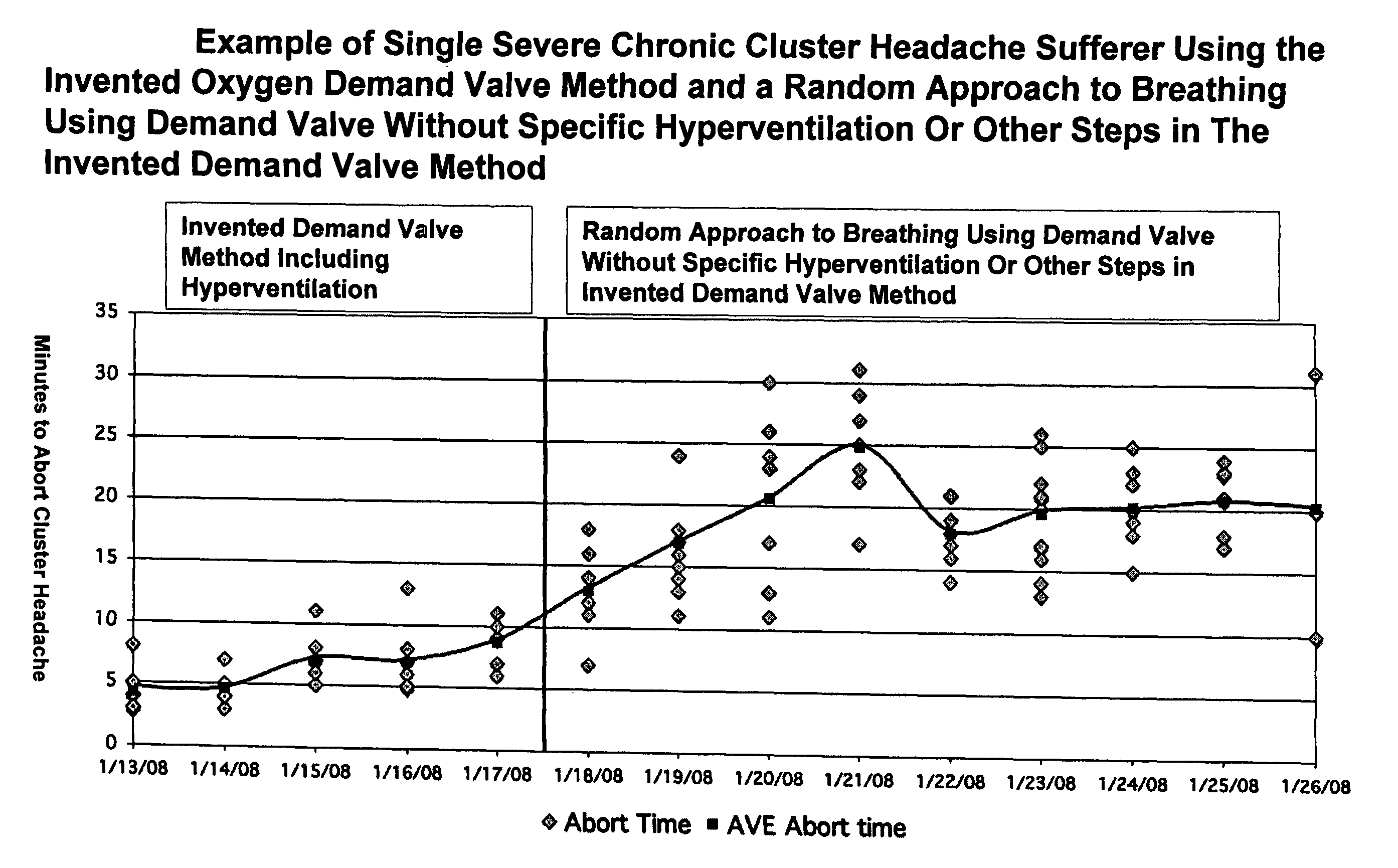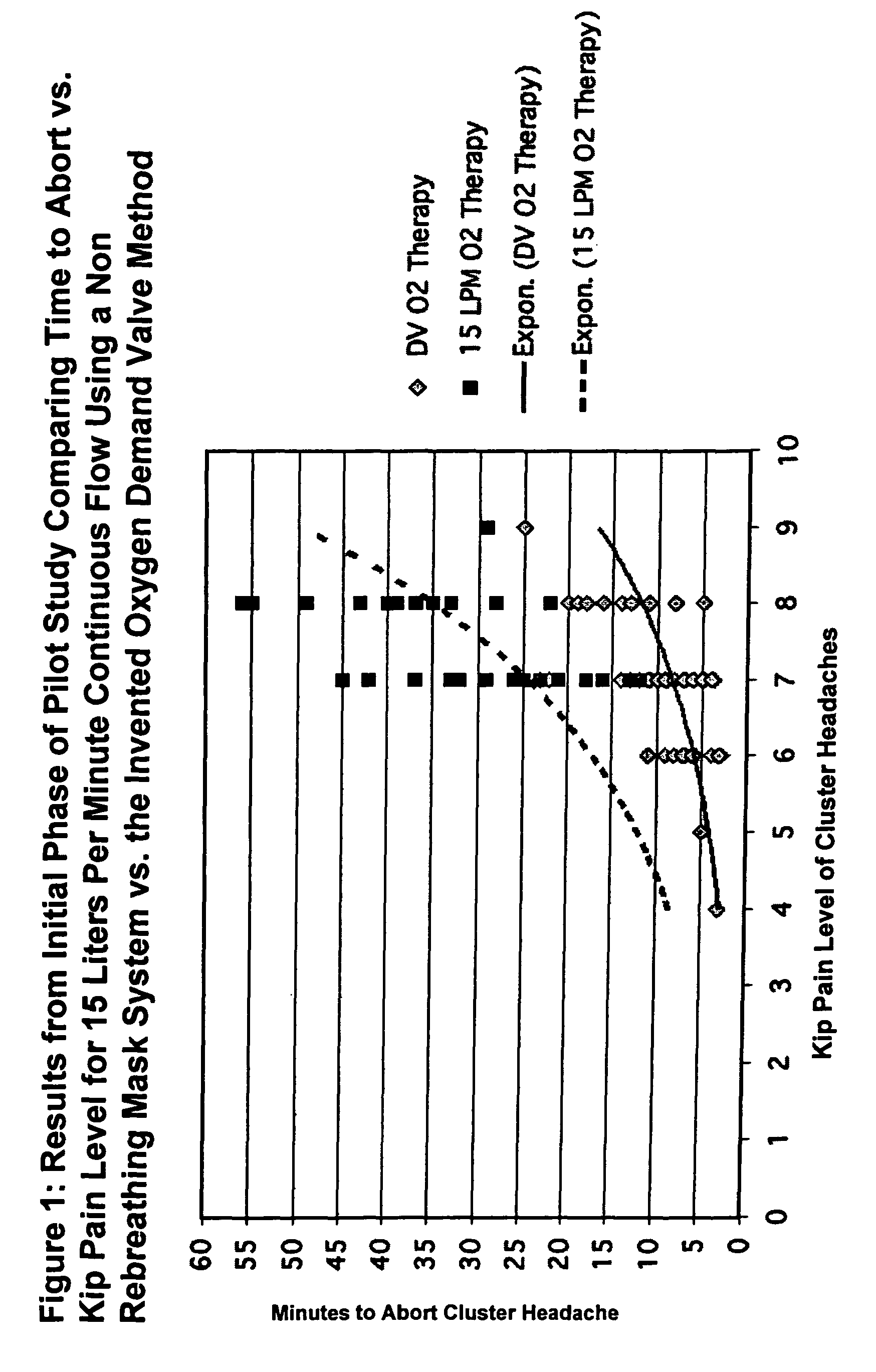Cluster headache patients, depending on the number of headaches per day and level of pain, may have high absentee rates from work or have to go on disability.
Notably, none of the preventative medicines used in cluster headache are given on the basis of proven theoretical background.
The result is that cluster headache patients are often taking what may be called a pharmaceutical cocktail of therapies, which in the non-
oxygen abortive
triptans, preventatives and opioids can separately, let alone together, generate potential adverse effects, especially at the cluster headache dosing levels which often far exceed the on-
label use recommendation for these drugs.
The reported complications from such procedures include death, permanent
neurological impairment, including corneal
anesthesia which can lead to visual loss,
anesthesia dolorosa, jaw deviation and cluster attacks switching sides after a unilateral
lesion has been made.
While oxygen is effective in aborting a cluster headache the mechanism of the effectiveness of oxygen in treating cluster headache is not understood and the percentage of cluster headache sufferers who experience successful
oxygen therapy, especially chronic sufferers over the age of 50, leaves much room for improvement.
A major deficit in the existing literature on the use of oxygen to abort a cluster headache, is that
efficacy and time to abort is given in terms of sex, age and other criteria, but no relationship is given between the level of a cluster headache in terms of pain, for example, using the Kip scale, which is broadly used to describe cluster headaches in the US patient
community and to some degree in the medical
community, and the
efficacy of oxygen and time to abort.
However, only a few models have possible flow rates as high as 15 l / min and can only provide this flow rate for a limited period of time.
Due to LOX
system cost and typical reimbursement policies, cluster headache sufferers may have only one portable LOX unit which is
usable for perhaps aborting 1-2 cluster headaches that they need to keep refilling at home from a reservoir.
Oxygen concentrators are rarely used due to their typically low
continuous flow volumes of 5 l / min or less, with some more expensive systems providing 10-15 l / min.
Nasal cannula and low to medium concentration oxygen masks result in a high degree of
dilution of delivered oxygen with air, such that actual
inhalation of anywhere at or near 100% oxygen is impossible.
Because the typical non-rebreathing
mask system is disposable and intended for respiratory therapy use where patients generally use a head strap the one way valves on these masks are made of non durable thin rubber, plastic, vinyl or
silicone.
The design is supposed to allow exhaled gases to escape, but not allow air to enter.
Second, the
mask with just the head strap does not provide a tight enough facial seal to assure minimization of room air leaking into the
mask.
The mask is thus highly flexed and the valves may pop off or be partially gripped or torn off the mask, leading to a high degree of
dilution of the
continuous flow oxygen input into the mask with room air during inspiration.
This lack of sufficient incoming oxygen flow contributes to
carbon dioxide accumulation in the mask from exhaled breath prior to the next breath, which leads to an unacceptable amount of
carbon dioxide mixing with the oxygen entering the mask from its source.
The difficulty in inhaling from the non-rebreathing mask
system that is not sufficiently or completely filled between the breaths of someone hyperventilating due to pain and
physical activity leads to increased
anxiety and further and or prolonged hyperventilation.
The result is that the cluster headache sufferer may be sucking in air through faulty portions of the masks facial seal by sheer negative pressure generated by inhaling, if not gasping, when no gas volume is left in the mask, or, lifting the mask to inhale room air out of
panic in their
mental state during a severe cluster headache.
The result is the patient inhaling a concentration of exhaled
carbon dioxide along with new incoming oxygen from the
continuous flow source, and, any air that leaks in through the mask facial seal due to negative pressure generated by the cluster headache sufferer gasping, decreasing the effectiveness of what would have been 100% oxygen, and therefore greatly diminishing the effectiveness of the therapy.
All of the above is an example of how the historical and current
standard of care use for cluster headache therapy of 7-15 l / min continuous flow with a standard non-
breathing bag designed for respiratory use creates a severely problematic therapy
regimen for aborting a cluster headache and doing so in as little a time as possible.
Therefore, even a “
high concentration non-rebreathing masks system,” supposedly intended to deliver close to an ideal 93% from an
oxygen concentrator or 100% oxygen from a compressed cylinder or
liquid oxygen reservoir source, significantly fails to do so.
As previously noted, it has been reported that higher oxygen flow rates above 15 l / min have not been shown to benefit cluster headache patients
refractory to standard
oxygen therapy.
(Rozen 2004) This is in part due to the lack of familiarity that physicians who treat cluster headache patients have concerning demand valve
oxygen delivery equipment, and, their reliance on the known
standard of care, i.e., the non-rebreathing
oxygen mask system, as the device by which they evaluate higher flow rates which are continuous in nature, fixed by the rate of flow delivered by the available flow meters, and which suffer from the other non-rebreathing mask related deficits described herein.
Therefore, the use of a demand valve and its ability if used according to a specific method to significantly improve
oxygen therapy of cluster headache is novel and not intuitive to anyone schooled in the art of cluster headache therapy.
In fact, oxygen
demand valves have been available for decades and have never been cited in the large base of historical cluster headache literature as a potential device for oxygen therapy in cluster headache.
Furthermore,
hyperbaric oxygen therapy is not a practical form of abortive therapy since cluster headache sufferers have their headaches at home, at work, while shopping or otherwise located and need immediate access to therapy in order to achieve optimum relief.
The scarcity and cost of use of
hyperbaric oxygen systems at
medical care facilities, the need for professional care givers specially trained in hyperbaric
medicine to be present in order to operate them, the time it takes to get a patient into one, and, their high cost of use without reimbursement for cluster headache therapy, renders them also all but unusable for aborting a cluster headache.
No medical journal articles were found which discussed the use of an oxygen medical demand valve intended for emergency
resuscitation use as a delivery device for cluster headache, nor therefore any specifically
effective method of demand valve use.
The objective of using the type of demand valve described in this paper, now known as a conserver and intended for low flow rates such as 3 l / min, is an
efficacy equivalent to non stop continuous flow and savings on use and cost of oxygen, and not a significantly improved efficacy or change in the change in the basic nature of the condition.
There is also some percentage of cluster headache sufferers who are needle phobic and for whom constant subcutaneous injections of sumatriptan are difficult if not impossible to pursue.
This presents a clear economic burden on cluster headache patients, especially given episodic sufferers may have attacks every day during an episode that can last for weeks or chronic sufferers may have attacks every day during a given year.
However, the remaining high cost for injectable sumatriptan on a constant basis, day after day during an episode or ongoing for a chronic sufferer, whether using 3 mg or 6 mg per cluster headache, with or without insurance and co-pay, is still prohibitively high.
For a cluster headache sufferer who does not have co-pay coverage, or, is limited to only 8 doses covered by co-pay per month which is not an uncommon practice by insurance carriers, an impossible financial barrier is raised to routine use of the
drug by cluster headache sufferers.
Patients have also reported to the leading cluster headache patient organization that health insurance companies are starting to drop them as clients because of their routine use of expensive subcutaneous sumatriptan injections.
Cluster headache sufferers are therefore primarily faced with the use of subcutaneous sumatriptan or inhalable
zolmitriptan, which are effective but can only be used a limited number of times a day without risk of adverse effects in particular to the heart, and is extremely costly, plus
verapamil at
dose levels which can also
impact the heart.
Sumatriptan is currently considered the abortive pharmacological agent of choice, but the recommended
dose is only 2 per day and it is very expensive.
There is at present only limited experience in the management of patients in the latter
age groups.
 Login to View More
Login to View More 


